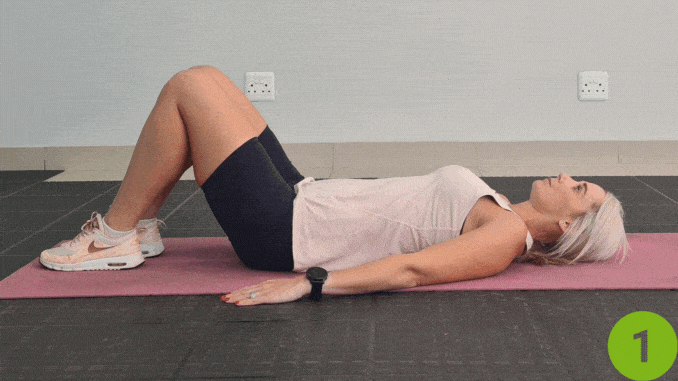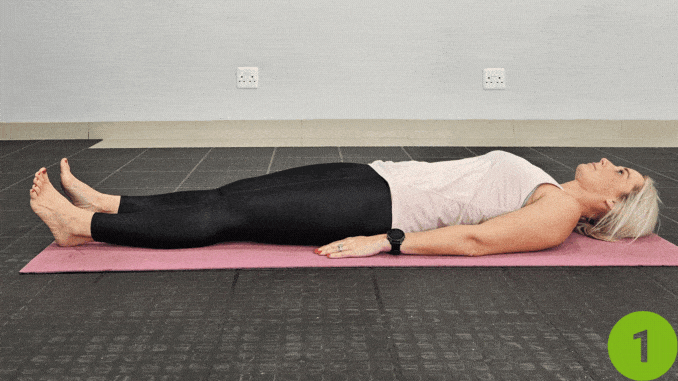If you’ve ever dealt with lower back pain that radiates down into your buttocks or thighs, you’re probably wondering if exercise could help ease that discomfort.
I’ve learned that exercise can be a powerful way to manage symptoms and improve overall well-being for those diagnosed with spondylolisthesis. In this condition, one vertebra slips forward over the one below.
In cases of degenerative spondylolisthesis, common in older adults, the pain is often due to the breakdown of intervertebral discs and joints. This can cause symptoms like lower back pain, leg pain, and sometimes even spinal stenosis, where the spaces in the spine narrow.
Understanding the right exercises can make a huge difference in managing these symptoms. I’d recommend following this guide, as it covers critical spondylolisthesis exercises and answers common questions, offering a helpful roadmap for improving back health.
Understanding Lumbar Spondylolisthesis

When a vertebra in the spine slips out of place and moves forward over the one below it, as in spondylolisthesis, it can cause discomfort. I’ve learned that this slippage can irritate nearby nerves and strain muscles, leading to pain, numbness, or even weakness in the lower back, buttocks, and legs.
Spondylolisthesis comes in different forms. Some types are present from birth (congenital), while others can result from injury or repetitive stress on the spine. Lumbar spondylolisthesis is a common culprit [1] behind sciatica, and it needs medical attention to be managed appropriately.
Exercise plays a huge role in managing spondylolisthesis symptoms. It can help relieve pain, improve flexibility, and strengthen core muscles, which are crucial for supporting the spine.
But, before jumping into any exercise program, it’s always wise to check with a doctor or physical therapist. They’ll be able to assess your specific situation and tailor an exercise routine that’s both safe and effective for you.
Treatment options for spondylolisthesis can range from conservative approaches like core strengthening exercises and pain management to bracing or, in more severe cases, surgery. Getting personalized advice from a healthcare professional is vital to choosing the right path for managing the condition.
What is the Best Exercise for Spondylolisthesis in Physical Therapy?
There’s no one-size-fits-all exercise for spondylolisthesis, but I’ve learned that a well-rounded exercise program that focuses on core strength, flexibility, and overall fitness can make a difference. Physical therapy plays a significant role in designing a routine that fits your specific needs and can be adjusted as your condition improves or changes.
Core strengthening exercises are an excellent place to start. For example, pelvic tilts and planks are great for stabilizing the muscles that support the spine.
With pelvic tilts, I lie on my back with my knees bent, pull my belly button toward my spine, and hold that position. Repeating this a few times helps build core strength, reduce pain and make daily movements easier.
Stretching exercises are another critical element, especially regarding tight hamstrings and the muscles around the lumbar spine. Stretching regularly improves flexibility and reduces tension, which often eases discomfort.
Low-impact aerobic exercises like swimming or walking are gentle on the spine but boost overall fitness. They can increase the heart rate without putting too much stress on the back, which is essential when managing spondylolisthesis.
Of course, it’s always best to consult a doctor or physical therapist first. They can ensure the exercises are safe and tailored to your situation, showing you the proper form to avoid making things worse while maximizing the benefits.
What Should You Not Do With Spondylolisthesis

While exercise is beneficial for spondylolisthesis, it’s important to be mindful of certain activities that can worsen your symptoms. Here’s what to avoid:
- Exercises that hyperextend the spine: Deep back bends, and similar exercises can strain your spine excessively and aggravate the slippage.
- Heavy weightlifting: Avoid weightlifting that puts a lot of stress on your spine. Lighter weights with proper form are a safer option.
- Ignoring pain: Listen to your body. If an exercise causes pain, stop it immediately and consult your doctor or physical therapist.
While exercise benefits spondylolisthesis, it’s essential to be mindful of certain activities that can worsen your symptoms. Here’s what to avoid:
- Exercises that hyperextend the spine: Deep back bends, and similar exercises can strain your spine excessively and aggravate the slippage.
- Heavy weightlifting: Avoid weightlifting that puts a lot of stress on your spine. Lighter weights with proper form are a safer option.
- Ignoring pain: Listen to your body. If an exercise causes pain, stop it immediately and consult your doctor or physical therapist.
Spondylolisthesis Exercises: Examples for a Safe and Effective Core Muscles Routine
As mentioned previously, there’s no one-size-fits-all approach to exercise for spondylolisthesis. However, here are some examples of exercises that can be beneficial, along with instructions and descriptions:
Core Strengthening Exercises
1. Pelvic Tilt

- For this spondylolisthesis exercises, lie on your back with your knees bent and feet flat on the floor.
- Then, you can place your arms on your sides or spread them on the side at shoulder level in a T-position.
- Engage your core while flattening your back towards the floor.
- Hold this position for 7 seconds before returning to the starting position .
- Make sure your breathing is normal.
- Complete 10 repetitions, 1-2 sets.
2. Straight Arm Plank

- Begin in an upright standing position with your feet shoulder-width apart.
- Hinge from your hips and knees to lower both hands to the floor, then step back with both feet to move into a straight-arm plank position.
- Maintain good alignment in your head, shoulders, hips, and legs.
- Engage your core and hold this position for 10 seconds.
Stretching Exercises
1. Hamstring Stretch

For this spondylolisthesis exercises, use a strap, resistance band, towel, or any piece of fabric that you can loop under your foot.
- Lie on your back on the floor, maintaining good alignment with your head, shoulders, hips, and legs.
- Tighten your core.
- Loop the strap under one foot and extend your leg towards the ceiling, ideally to a 90-degree angle. Hold this position for 30 seconds.
- Relax, return to the starting position, and repeat the movement on the opposite side.
2. Gluteal Stretch

- Firstly, lie on the back with both knees bent.
- Rest the ankle of one leg against the knee of the other.
- Grab onto the thigh of the bottom leg and pull it toward the chest until you feel a stretch in the buttocks and possibly the outer part of the hip.
- Hold this pose for 15 to 30 seconds before switching to the other leg.
3. Double Knee to Chest

- For this spondylolisthesis exercises, lie on your back with your knees bent and feet flat on the floor.
- Looking for a light stretch in your lower back and glute, bring both knees to your chest and lift your upper body off the floor as you hold onto your knees with both arms.
- Moreover, hold this position for several deep belly breaths, in through your nose and out through your mouth.
Remember: These are just examples, and it’s crucial to consult a doctor or physical therapist before starting any exercise program. They can show you the proper form for each exercise and ensure they’re safe and appropriate for your condition.
Disclaimer: While these exercises can benefit some people with spondylolisthesis, listening to your body is essential. Stop any exercise that causes pain and consult your healthcare professional immediately.
Safety and Pain Management When Exercising
Here are some additional tips to ensure safe and effective exercise with spondylolisthesis:
- Signs an exercise is causing harm: Increased pain, radiating pain, or muscle weakness are signs you might be pushing yourself too hard. Stop the exercise and consult your healthcare professional.
- Modifying exercises for pain management: If an exercise is causing discomfort, modify it by reducing the range of motion, using props for support, or starting with bodyweight exercises instead of weights.
Progression and Long Term Management
Consistency is vital when it comes to exercise and spondylolisthesis. Start slowly and gradually increase the frequency and duration of your workouts as tolerated. Here’s what you can expect with consistent exercise:
- Improved core strength and stability
- Enhanced flexibility in your lower back and hamstrings
- Reduced pain and discomfort
- Potentially preventing further slippage of the vertebra (consult your doctor for specifics)
Additional Considerations
Spondylolisthesis management goes beyond exercise. Here are some lifestyle changes that can complement your exercise routine and improve your overall well-being:
- Maintaining good posture: Proper posture reduces stress on your spine.
- Managing weight: Excess weight can put additional strain on your back.
- Proper sleep habits: Getting enough sleep allows your body to recover and repair itself.
Remember: While this blog post provides general information, it’s not a substitute for professional medical advice. Always consult a doctor or physical therapist before starting any exercise program, especially if you have spondylolisthesis. They can assess your condition and create a safe and effective exercise routine tailored to your needs.
Conclusion: Taking Charge of Your Back Health
Managing spondylolisthesis can be challenging, but I’ve found that exercise can make a big difference in reducing pain and improving quality of life. By sticking to a safe and effective exercise routine and pairing it with healthy lifestyle habits, it’s possible to take control of back health.
Strengthening core muscles, improving flexibility, and staying active helps support the spine and reduce discomfort.
With the right approach, you can experience improved strength, mobility, and overall well-being even while managing a condition like spondylolisthesis. [2]
Did you know some of your most common daily habits are contributing to your back pain? It’s true! But, once you understand how and why, and you make some easy adjustments, you can start supporting and strengthening your back. It will go back to moving and feeling naturally good! So check out the 7 Best Daily Habits for a Healthy Back now!


